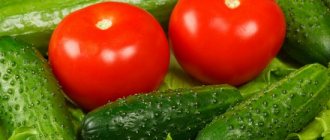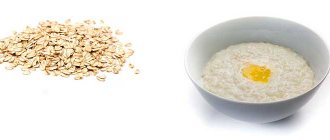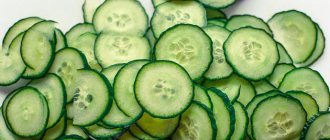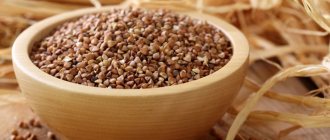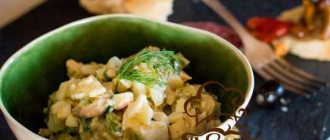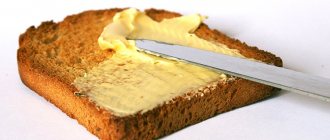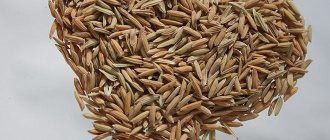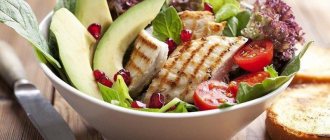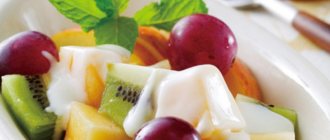Beetroot is a vegetable that everyone has encountered at least once in their life. Sugar is made from it, which is widely used in all types of cooking. Everyone eats beets in the form of salads and prepares soups from them. However, no one knows about its beneficial properties, how many vitamins and microelements are included in the composition.
Nutritional value and calorie content
Calorie content per 100 grams of raw vegetable: 43 kcal.
| 1. | Squirrels | 1.6 g |
| 2. | Fats | 0.09 g |
| 3. | Carbohydrates | 8.9 g |
| 4. | Vitamin A | 33 IU |
| 5. | Vitamin C | 4.9 mg |
| 6. | Vitamin B6 | 0.1 mg |
| 7. | Vitamin B9 | 1, mg |
| 8. | Calcium | 16 mg |
| 9. | Iron | 0.8 mg |
| 10. | Magnesium | 23 mg |
| 11. | Sodium | 12 mg |
| 12. | Iodine | 19 mg |
| 13. | Water | 88 g |
| 14. | Alimentary fiber | 2.8 g |
Cooked beets contain slightly more calories than raw ones. There are 49 kcal per 100 grams of product. This is due to the fact that the beet fibers shrink at elevated temperatures and some of the water is lost.
The weight of the vegetable decreases, but the composition remains the same. This vegetable has a low protein content, there is no fat in it at all, but almost 10% carbohydrates. Heat treatment increases the amount of natural sugars. In other words, the glycemic index increases.
Boiled beets are used as food more often than raw beets. They prepare the well-known borscht soup from it, cut vinaigrettes, make “herring under a fur coat,” and preserve the preparations for the winter. It is good to use as a dietary product. The vegetable has a sufficient amount of carbohydrates and can easily replace fatty foods. It will relieve unwanted hunger and normalize intestinal function.
Recipe for beetroot salad with butter. Calorie, chemical composition and nutritional value.
Nutritional value and chemical composition of “Beetroot salad with oil”.
The table shows the nutritional content (calories, proteins, fats, carbohydrates, vitamins and minerals) per 100 grams of edible portion.
| Nutrient | Quantity | Norm** | % of the norm in 100 g | % of the norm in 100 kcal | 100% normal |
| Calorie content | 98.8 kcal | 1684 kcal | 5.9% | 6% | 1704 g |
| Squirrels | 1.5 g | 76 g | 2% | 2% | 5067 g |
| Fats | 6.6 g | 56 g | 11.8% | 11.9% | 848 g |
| Carbohydrates | 8.4 g | 219 g | 3.8% | 3.8% | 2607 g |
| Organic acids | 0.1 g | ~ | |||
| Alimentary fiber | 2.4 g | 20 g | 12% | 12.1% | 833 g |
| Water | 78.6 g | 2273 g | 3.5% | 3.5% | 2892 g |
| Ash | 1.2528 g | ~ | |||
| Vitamins | |||||
| Vitamin A, RE | 1.9 mcg | 900 mcg | 0.2% | 0.2% | 47368 g |
| beta carotene | 0.009 mg | 5 mg | 0.2% | 0.2% | 55556 g |
| Vitamin B1, thiamine | 0.018 mg | 1.5 mg | 1.2% | 1.2% | 8333 g |
| Vitamin B2, riboflavin | 0.036 mg | 1.8 mg | 2% | 2% | 5000 g |
| Vitamin B4, choline | 0.38 mg | 500 mg | 0.1% | 0.1% | 131579 g |
| Vitamin B5, pantothenic | 0.126 mg | 5 mg | 2.5% | 2.5% | 3968 g |
| Vitamin B6, pyridoxine | 0.078 mg | 2 mg | 3.9% | 3.9% | 2564 g |
| Vitamin B9, folates | 12.67 mcg | 400 mcg | 3.2% | 3.2% | 3157 g |
| Vitamin C, ascorbic acid | 4.05 mg | 90 mg | 4.5% | 4.6% | 2222 g |
| Vitamin E, alpha tocopherol, TE | 2.95 mg | 15 mg | 19.7% | 19.9% | 508 g |
| Vitamin RR, NE | 0.4337 mg | 20 mg | 2.2% | 2.2% | 4611 g |
| Niacin | 0.184 mg | ~ | |||
| Macronutrients | |||||
| Potassium, K | 281.06 mg | 2500 mg | 11.2% | 11.3% | 889 g |
| Calcium, Ca | 40.14 mg | 1000 mg | 4% | 4% | 2491 g |
| Magnesium, Mg | 20.92 mg | 400 mg | 5.2% | 5.3% | 1912 |
| Sodium, Na | 295.04 mg | 1300 mg | 22.7% | 23% | 441 g |
| Sera, S | 7.96 mg | 1000 mg | 0.8% | 0.8% | 12563 g |
| Phosphorus, P | 41.1 mg | 800 mg | 5.1% | 5.2% | 1946 |
| Chlorine, Cl | 428.58 mg | 2300 mg | 18.6% | 18.8% | 537 g |
| Microelements | |||||
| Bor, B | 271.8 mcg | ~ | |||
| Vanadium, V | 67.96 mcg | ~ | |||
| Iron, Fe | 1.361 mg | 18 mg | 7.6% | 7.7% | 1323 g |
| Yod, I | 6.94 mcg | 150 mcg | 4.6% | 4.7% | 2161 g |
| Cobalt, Co | 2.184 mcg | 10 mcg | 21.8% | 22.1% | 458 g |
| Manganese, Mn | 0.6555 mg | 2 mg | 32.8% | 33.2% | 305 g |
| Copper, Cu | 139.78 mcg | 1000 mcg | 14% | 14.2% | 715 g |
| Molybdenum, Mo | 10.421 mcg | 70 mcg | 14.9% | 15.1% | 672 g |
| Nickel, Ni | 13.592 mcg | ~ | |||
| Rubidium, Rb | 439.8 mcg | ~ | |||
| Selenium, Se | 0.23 mcg | 55 mcg | 0.4% | 0.4% | 23913 g |
| Fluorine, F | 19.42 mcg | 4000 mcg | 0.5% | 0.5% | 20597 g |
| Chromium, Cr | 19.42 mcg | 50 mcg | 38.8% | 39.3% | 257 g |
| Zinc, Zn | 0.4379 mg | 12 mg | 3.6% | 3.6% | 2740 g |
| Digestible carbohydrates | |||||
| Starch and dextrins | 0.513 g | ~ | |||
| Mono- and disaccharides (sugars) | 8.3 g | max 100 g | |||
| Glucose (dextrose) | 0.2913 g | ~ | |||
| Sucrose | 8.3495 g | ~ | |||
| Fructose | 0.0971 g | ~ | |||
| Essential amino acids | 0.3981 g | ~ | |||
| Arginine* | 0.0709 g | ~ | |||
| Valin | 0.0515 g | ~ | |||
| Histidine* | 0.0136 g | ~ | |||
| Isoleucine | 0.0583 g | ~ | |||
| Leucine | 0.065 g | ~ | |||
| Lysine | 0.0893 g | ~ | |||
| Methionine | 0.0194 g | ~ | |||
| Methionine + Cysteine | 0.0388 g | ~ | |||
| Threonine | 0.0515 g | ~ | |||
| Tryptophan | 0.0126 g | ~ | |||
| Phenylalanine | 0.0437 g | ~ | |||
| Phenylalanine+Tyrosine | 0.0971 g | ~ | |||
| Nonessential amino acids | 0.9146 g | ~ | |||
| Alanin | 0.0388 g | ~ | |||
| Aspartic acid | 0.3184 g | ~ | |||
| Glycine | 0.0369 g | ~ | |||
| Glutamic acid | 0.266 g | ~ | |||
| Proline | 0.0456 g | ~ | |||
| Serin | 0.0612 g | ~ | |||
| Tyrosine | 0.0485 g | ~ | |||
| Cysteine | 0.0146 g | ~ | |||
| Sterols (sterols) | |||||
| beta sitosterol | 12.945 mg | ~ | |||
| Saturated fatty acids | |||||
| Saturated fatty acids | 0.7 g | max 18.7 g | |||
| 16:0 Palmitinaya | 0.4013 g | ~ | |||
| 18:0 Stearic | 0.2654 g | ~ | |||
| 20:0 Arakhinovaya | 0.0194 g | ~ | |||
| 22:0 Begenovaya | 0.0453 g | ~ | |||
| Monounsaturated fatty acids | 1.5405 g | min 16.8 g | 9.2% | 9.3% | |
| 18:1 Oleic (omega-9) | 1.534 g | ~ | |||
| Polyunsaturated fatty acids | 3.8706 g | from 11.2 to 20.6 g | 34.6% | 35% | |
| 18:2 Linolevaya | 3.8706 g | ~ |
The energy value of Beet salad with oil is 98.8 kcal.
Primary Source: Created in the application by the user. Read more.
** This table shows the average levels of vitamins and minerals for an adult. If you want to know the norms taking into account your gender, age and other factors, then use the “My Healthy Diet” application.
The benefits of beets, boiled and raw
Beets have a huge number of beneficial properties. Its composition will help maintain the daily norm of minerals and vitamins. Also, its use will help strengthen the immune system, which is very good during the cold season.
Beetroot improves hematopoietic function and the body's condition in case of iron deficiency anemia. It helps pregnant women not only in the development of the unborn baby, but also in coping with prolonged constipation that is characteristic of this period.
Raw vegetables are processed into beet juices and vegetable salads are prepared. Juices help preserve all the most beneficial elements of the vegetable. You need to drink this juice mixed with some other juice. This will smooth out the cloyingly sweet taste. When drinking juice, beneficial components penetrate the body faster.
- carbohydrates make up 10% of the total mass. They can be divided into glucose, sucrose and fructose. They participate in the metabolic processes of the body. They are broken down for energy, which is needed for vital activity;
- vitamins B and C. Vitamin C is responsible for immunity, so beets will help strengthen it. Folic acid improves fertility in men and women. Helps with the development of the nervous system in the fetus during pregnancy. Vitamin B6 helps cope with stress;
- mineral elements: potassium, manium, calcium, iron, manganese, sulfur, phosphorus, chlorine and others. They all participate in biochemical processes and play an important role in human life support;
- organic acids: oxalic, malic, citric. All three acids participate in the Krebs cycle, upon release from which glucose is formed, which is necessary to nourish the brain;
- amino acids: valine, arginine, histidine, betaine and others. They are components of proteins and are part of DNA;
- fiber (pectins) is contained in large quantities. It normalizes intestinal function. The human body does not have enzymes that can completely digest fiber. It swells in the stomach, which suppresses the feeling of hunger. Only its upper layers are digested, the remains are excreted from the body. Pectin also kills putrefactive bacteria in the gastrointestinal tract. Great for helping you lose weight.
What is the calorie content of boiled beets per 100 grams: benefits and harm to the body, composition and nutritional supplements
Beetroot is a very common vegetable in Slavic cuisine. This root vegetable, unpretentious to grow, is rich in minerals and vitamins. It often becomes a substitute for beef or fish. This root vegetable makes a delicious side dish for dinner and a delicious vegetable salad for lunch.
No less popular is the recipe for beetroot soup made from baked beets. It is not surprising that people immediately buy 3 kg or more of this vegetable at home in order to diversify their diet. Both juice and leaves can be eaten. Not only the healing capabilities, but also the taste properties of the red vegetable were appreciated. Therefore, I would like to know what the calorie content of beets and their BZHU is.
List of unique properties of vegetables
- Laxative effect. Helps cope with long-term constipation, improve digestive function and cleanse toxins.
- Regulation of fat metabolism. Betaine in beets regulates fat metabolism.
- Reducing blood pressure in hypertension. It contains a large amount of magnesium, which strengthens the heart.
- Anti-inflammatory effect.
- Painkiller. It will not relieve severe pain, but it will help with bruises.
- Hematopoietic function. Iron is involved in the formation of red blood; beets contain a lot of it.
- Regulation of the endocrine system. The iodine contained in the vegetable helps with endocrine diseases.
- Energy function. The high carbohydrate content helps the body get maximum energy for life.
A nutritionist will tell you about the benefits of beets for humans:
Boiled beets: health benefits and harms
The benefits of boiled beets for the human body are invaluable. This product can bring a lot of health benefits to adult men, women and children. The root vegetable has a beneficial effect on a variety of processes occurring in the body of adults and children, but it is especially useful for hematopoiesis. Therefore, it is so important to periodically include boiled beets in the menu for those who suffer from anemia.
Photo source: shutterstock.com
It is no less useful to eat the product for people who, for certain reasons, have lost a lot of blood (as a result of accidents, injuries, operations, heavy menstruation).
Among other positive properties of boiled beets in water, it is worth noting the positive effect on the digestive system. Food contains organic acids that activate the process of food breakdown in the stomach and speed up metabolism. That is why the product is often included in the diet menu or for those who suffer from gastrointestinal diseases.
Recent studies have proven that the vegetable has a positive effect on men's health. To increase potency, it is recommended to include it in your daily diet. This food also helps well with prostate adenoma.
When boiled, the red root vegetable is a powerful natural antioxidant. Therefore, the product is useful for everyone who wants to cleanse their body and get rid of toxins, waste, heavy metal salts, and other harmful accumulations. That is why, with constant stress, poor diet, abuse of cigarettes and alcohol, and poor environment, you should not ignore the benefits of such a product.
Photo source: shutterstock.com
Cooked vegetables contain large amounts of betaine. This substance allows you to gently but effectively lower blood pressure. Therefore, it is recommended that hypertensive patients eat beets. In addition, the food is suitable for people with lipid metabolism pathologies. The vegetable perfectly fights cholesterol plaques that can be deposited on the walls of blood vessels. The root vegetable also copes well with other diseases. It will be needed to cleanse the liver and strengthen the body's defenses.
Beetroot boiled in water is no less useful for constipation. The fact is that this root vegetable is an effective natural laxative.
Can such a red product cause harm? Indeed, in some cases it is better to avoid eating this root vegetable, especially on an empty stomach. What are the contraindications, and for whom can boiled root vegetables be dangerous? Most often, the harm of beets comes down to a powerful laxative effect. If a person has a problem of this kind and often experiences diarrhea, then the unpleasant condition may take him by surprise.
Contraindications and harmful effects of root vegetables
- This product should not be abused if you have diabetes. Carbohydrates in the vegetable contribute to an increase in blood glucose;
- people suffering from intestinal diseases, such as enterocolitis, colitis, increased stomach acidity, gastroduodenitis, are at risk of developing diarrhea when consumed;
- beets promote salt formation, so in case of urolithiasis it is better to exclude them from the diet;
- If you are allergic to beets, you should not contact them or eat them. This can lead to serious consequences. Up to and including death.
How to cook beets correctly
Root vegetables must be washed well from the soil. You can trim off the small roots a little, but you need to cook them unpeeled. Vegetables are poured with cold water, which should completely cover them. Place on the stove over high heat. Bring to a boil. Next, cook for 120-180 minutes over medium heat. Then add cold water and cool. Peel the beet skin before use.
There is another way. Boil the beets in water for 20 minutes. Then wrap in foil and bake in the oven for 80-100 minutes. Pre-wash.
Chefs in restaurants prefer the accelerated version. Vegetables are washed. Boil for 40 minutes. Fill with cold water and leave in it for 20 minutes. It is believed that during this time the beets will be fully cooked.
Interesting recipes
There are many recipes for vegetable salads made from beets. They will help you lose weight and maintain a toned figure. Below are the main ones.
Salad with carrots
| Calorie content per 100 grams | 61 kcal |
| Squirrels | 1.9 g |
| Fats | 2.7 g |
| Carbohydrates | 8.3 g |
The beets should be boiled, then peeled. Wash and peel the carrots. Grate the vegetables on a coarse grater. Transfer to a salad bowl. Add salt and spices to taste. You can season with mayonnaise or olive oil.
Salad with boiled beets and sour cream
| Calorie content per 100 grams | 56.4 kcal |
| Squirrels | 1.70g |
| Fats | 1.98 g |
| Carbohydrates | 8.56 g |
Boil the beets for 120-180 minutes. To peel. Cut into cubes or strips, as you like. Sprinkle chopped vegetables with lemon juice and add a little horseradish. Season with spices and add salt to taste. Add sour cream and stir. At the end you can sprinkle with grated walnuts. A perfect dish for fasting days.
Salad with mayonnaise and garlic
| Calorie content per 100 grams | 114 kcal |
| Squirrels | 2.3 g |
| Fats | 7.2 g |
| Carbohydrates | 10.9 g |
Boil the beets, peel them. Grate on a coarse grater. Peel a few cloves of garlic and pass through a garlic press. You can just chop it finely. Season with mayonnaise.
Boiled beet salad with vegetable oil
| Calorie content per 100 grams | 70.1 kcal |
| Squirrels | 1.8 g |
| Fats | 2.8 g |
| Carbohydrates | 10.5 g |
Grate the boiled and peeled beets on a coarse grater or cut into strips. Chop the greens. Add a teaspoon of balsamic vinegar or lemon juice. Season with spices, add salt. Fill with oil.
The benefits and harms of raw and boiled beets
The beneficial properties are due to the mineral and vitamin composition of the product. It contains sodium, potassium, calcium, manganese, selenium, iodine, magnesium, sulfur, zinc, arginine, choline, phosphorus, cesium, rubidium, vitamins B, C, A, E, K, PP and other components. The product contains gamma-aminobutyric acid, which affects the metabolism of the cerebral cortex. Pectins (1.1%) and fiber (0.9%) remove breakdown products and heavy metal salts from the intestines. Citric, malic, lactic, and oxalic acids, which are contained in the root vegetable, have a positive effect on digestion.
Vitamins will strengthen the immune system, improve vision, nervous system activity, and the condition of nails, skin, and hair. Iron is beneficial for the female body, restoring blood loss and protecting against anemia. Beta-carotene is an antioxidant that prevents aging and helps fight harmful substances. Only 100 grams of beets per day will replenish the supply of nutrients in the body and improve well-being.
In addition to the benefits, the use of vegetables has limitations due to certain human diseases. It is not recommended for use for osteoporosis, urolithiasis, gastritis, and diabetes. People suffering from calcium deficiency should not overuse beets - the root vegetable reduces the body's ability to absorb it.
Some people are interested in the calorie content of boiled beets with butter, since they periodically prepare this simple and tasty dish. It consists of several affordable ingredients that are available in almost every kitchen.
Boiled beets: composition and nutritional value
What is the chemical composition of boiled root vegetables? Even 1 piece of this product is enriched with a variety of substances:
Also found in the root vegetable are vitamins B6 and H, phosphorus, malic, lactic, tartaric and other organic acids, and starch. The composition contains vitamins B5 and B1, which explains the benefits of beets for women, children, men and pregnant women.
Trans fats and cholesterol are completely absent in boiled beets.
A unique feature of boiled vegetables is that beneficial compounds and valuable substances are not destroyed during heat treatment. Therefore, the chemical composition of the cooked root vegetable is in no way inferior in benefits to the raw product.
Calorie content of boiled beets with oil
Beetroot with butter contains very few calories - about 90 per 100 grams of the finished dish. When cooked, the vegetable loses some of its beneficial properties, but it still contains many vitamins and minerals. It contains the most vitamins A, group B, C, D and PP, and among the minerals there are zinc, potassium, iron, manganese, etc.
Given the low calorie content of boiled beets with vegetable oil and garlic, this dish is considered quite valuable due to the content of many nutrients. The presence of sugar makes this salad not the most suitable for people with diabetes, but a 100-gram portion once a week will not harm even them.
Beetroot with oil: benefits
The advantages of beets with garlic and oil, in addition to low calorie content, include a high concentration of iodine and iron. The dish affects the bodies of men and women differently. Representatives of the fair sex are recommended to eat salad when their menstrual cycle is disrupted, and for men, the dish increases sexual activity.
Regular consumption of salad minimizes the risk of cancer and removes toxins and waste from the body.
How to cook beets with butter and garlic
The low calorie content of boiled beets with garlic and butter is due to the use of low-calorie products for preparing the dish:
First you need to cook the beets, cool, remove the skin and chop using a coarse grater. You can cut into thin slices if desired. Season with salt, pepper, oil and vinegar, add pre-chopped herbs and a clove of garlic. Mix all ingredients thoroughly and leave to steep for 10 minutes. The minimum calorie content of boiled beets with garlic and butter will not allow you to gain weight, but the salad will supply the body with useful substances.
Beets are a wonderful vegetable that is not only tasty and healthy, but also inexpensive. Especially beetroot dishes are ideal for those who watch their diet and count calories.
Daily intake of boiled beets
Despite the fact that this food has a lot of useful components in its chemical composition, it should not be included in the menu too often. The fact is that this ingredient for salads and side dishes has a fairly high glycemic index (64 GI).
Photo source: shutterstock.com
The treat can negatively affect the health of people with diabetes or those predisposed to this disease. Also, a high content of oxalic acid in the product can negatively affect the functioning of the gastrointestinal tract and cardiovascular system.
What is the daily consumption rate of this product? For an adult, it should not exceed 250 g per day. For a child, this volume is even less, since it is more difficult for a child’s body to absorb root vegetables. Therefore, the daily norm for a child aged 1 to 7 years is 50 g. From 7 years and older - 100 g per day.
Boiled beets with butter
This dietary salad will surely appeal to anyone who loves beets.
It is easy to do, requires very little time and few products:
- boiled beets – 500 g,
- apple cider vinegar - tbsp. l.,
- vegetable oil – 4 tbsp. l.,
- black pepper, salt - to taste.
Finely chop the beets or grate them on a coarse grater. Add the remaining ingredients and mix well.
This salad can stand alone during a diet or be an excellent addition to meat dishes.
The calorie content of beet salad with butter is 100 kcal per 100 g.
You can safely squeeze a couple of cloves of garlic into the same salad to give it a special aroma and pungency in taste. This dish will be especially useful during the cold season, when viral diseases of acute respiratory viral infections, acute respiratory infections and others are active.
The calorie content of a dish with garlic will not increase much and will be 110 kcal per serving.
Calorie table
During a diet, it is difficult to create a menu for the day so as not to go beyond the norm. To make the task easier, below is a table that indicates the calorie content of a beet dish:
| Name of the dish | Calorie content per 100 g (kcal) |
| Boiled red beets | 49 |
| Yellow boiled variety | 50 |
| Beet caviar | 47 |
| Beetroot puree | 70 |
| Beetroot soup | 73 |
| With walnuts and garlic | 93 |
| Horseradish salad | 95,6 |
| Cranberry salad | 103,7 |
| Appetizer with garlic and cheese | 211,6 |
| With garlic, nuts and prunes | 284 |
| With cottage cheese | 69,5 |
The video will tell you how to use beets for weight loss:
Source
Boiled beets with sour cream or garlic and mayonnaise
Grated beets seasoned with mayonnaise and sour cream is a favorite dish of many gourmets. After all, it cooks very quickly, has a delicate taste, and you can add anything to it:
This salad can often be found on the holiday table of a typical Russian family. Especially in winter, when vegetables become more expensive, you can buy beets for very little money and prepare several different dishes.
For those who constantly think about their figure, monitor their nutrition in every possible way and do not eat too much, beets with sour cream can be the best snack.
Depending on the fat content of sour cream, the calorie content of such a dish usually does not exceed 70 kcal per 100 grams.
Many people like to add mayonnaise to this salad instead of sour cream. Surely everyone understands that mayonnaise itself is very high in calories . Accordingly, the beetroot dish will immediately become much heavier.
However, due to the fact that the vegetable itself is easily absorbed by the body, beets with mayonnaise will also be an excellent snack for those who want to get a slim figure.
The calorie content of boiled beets with mayonnaise will be 150 kcal per 100 grams.
Knowing this value, you can easily control how many calories you consume per meal. By adding walnuts, the number of calories will increase by another 100 kcal.
Beets are a healthy vegetable that can be used to prepare many different dishes. Depending on what goal you are pursuing, you can add butter, sour cream or mayonnaise to it. In any case, a salad made from grated beets will turn out very tasty and will appeal to everyone who is not indifferent to this sweet root vegetable.
How to prepare the dish “Boiled beet salad in oil”
- Grate the beets.
- Squeeze the garlic through a press.
- Add garlic to beets, season with vegetable oil, mix well.
- Garnish the finished dish with dill leaves.
- Boiled beets - 600 gr.
- Garlic - 20 gr.
- Vegetable oil - 10 ml.
- Dill - 15 gr.
Nutritional value of the dish “Boiled beet salad in oil” (per 100 grams):
Ingredients and calorie content of the recipe “Boiled beet salad in oil”
(calorie content and nutritional value are calculated approximately, excluding boiling and frying)
This is a custom recipe, so there may be errors and typos. If you find them, please write them in the comments below the recipe and we will correct them.
Step-by-step recipes with photos from our website are in the “Recipes” section.

